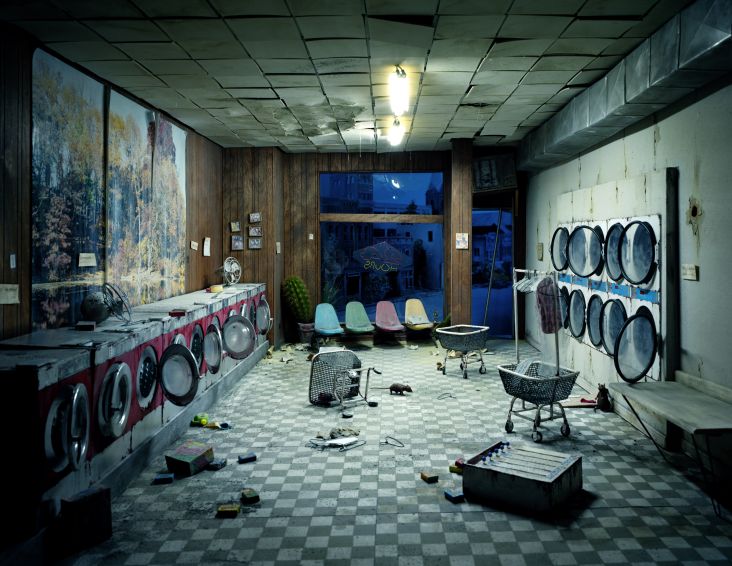
Image licensed via Adobe Stock
Part of this takes place naturally on the job, of course, but it's also about adding new strings to your bow by constantly upskilling. And what's the hottest skill to add to your toolbox right now? Motion design.
This makes total sense if you think of where we were as a society just ten years ago, and where we are now. Back in 2010, the iPad had only just been invented, and most people's phones didn't do much beyond making calls and sending texts – most design, whether print or digital, was based around static images and layouts.
Now, in 2020, we're in a world where we're double-screening, triple-screening, even quadruple screening at times. As we continually switch between our smartphones, tablets, laptops, smartwatches, Fitbits, smart TVs and other devices – not to mention the graphical interfaces on everything from food ordering screens in McDonald's to parking machines outside Tescos – every product, service, and brand is battling for our attention. And the biggest weapon they have in their arsenal is movement.
Why movement matters
We all know this on a deep and fundamental level. Basically, if we catch something moving out of the corner of our eye, we can't help but turn our heads to respond. It's an inescapable fact of evolution, and the reason our ancestors survived potential attackers in the wild (while their contemporaries, who weren't genetically programmed in that way, weren't so lucky).
Of course, in 2020 we no longer need to worry about being eaten by a sabre-toothed tiger, but that same instinctive mechanism still functions in precisely the same way. Which is why you can't avoid noticing that animated GIF when you're scrolling through your Twitter or Instagram feed… however cheesy it may be.
Similarly, in the world of professional design, whether you want to help explain a buying process to people on an app, or catch their attention on a digital billboard, motion graphics are increasingly key. And as for launching a campaign across social media: well, if you're images are static, they're going to have to be pretty amazing to compete with something that's animated and eye-catching.
How to take advantage
All of this has posed both a problem and an opportunity for the graphic design profession. The problem is mainly one for creative directors and studio heads, who are desperately trying to meet the increasing demand from brands for motion graphics, whether in the form of explainer videos, website animations or video credit sequences. Unfortunately (for them), there aren't enough talented designers out there who are skilled in creating motion graphics.
The opportunity, conversely, presents itself to graphic designers who have mastered motion graphics, as they can now have their pick of the jobs or freelance gigs that interest them (and pay the best). But what if you're a graphic designer who doesn't know how to create motion graphics? Well, don't fret: it's a relatively straightforward skill for you to learn. That's because making your designs move is mostly a technical challenge, while the key design skills are ones you already have. So in a way, you're halfway to becoming a motion designer already.
Go the extra mile by taking a motion design course, and you may be astonished by how many new opportunities open up to you: if you don't believe us, just put "motion design" into most job search engines and see what comes up.
Or maybe you don't want another job, and you're happy where you are? In that case, learning motion graphics should prove a great way to endear yourself to your boss, allowing you to take more of a leading role in projects, and allowing the studio to pitch for a broader range of work and clients.
Either way, boosting your skillset by learning motion graphics is what you might call a no-brainer.
How to learn motion design
You could probably learn motion design by following videos on YouTube and Googling blog posts, but let's face it, who has time for that? Rather than wasting days of your life in this way, we'd instead investing a bit of money with a reputable course provider, and our favourite is Created.
This online academy offers a nine-month, part-time course that will give you the training you need to master the discipline. You'll learn all the software fundamentals of creating motion design using After Effects and Cinema 4D software, plus there's also a strong practical focus. Working under the guidance of a mentor, you'll tackle real-world briefs throughout the course, including a series of one-to-one coaching sessions.
This industry-level, practical approach will put you in the position of being a perfect fit for any job you apply for. Because not only will you have experience on the kind of motion design work that's most in-demand right now; but you'll also have built up a profile with six professional-level projects to show off. And nothing is more powerful than the maxim: 'Show, don't tell'.

























